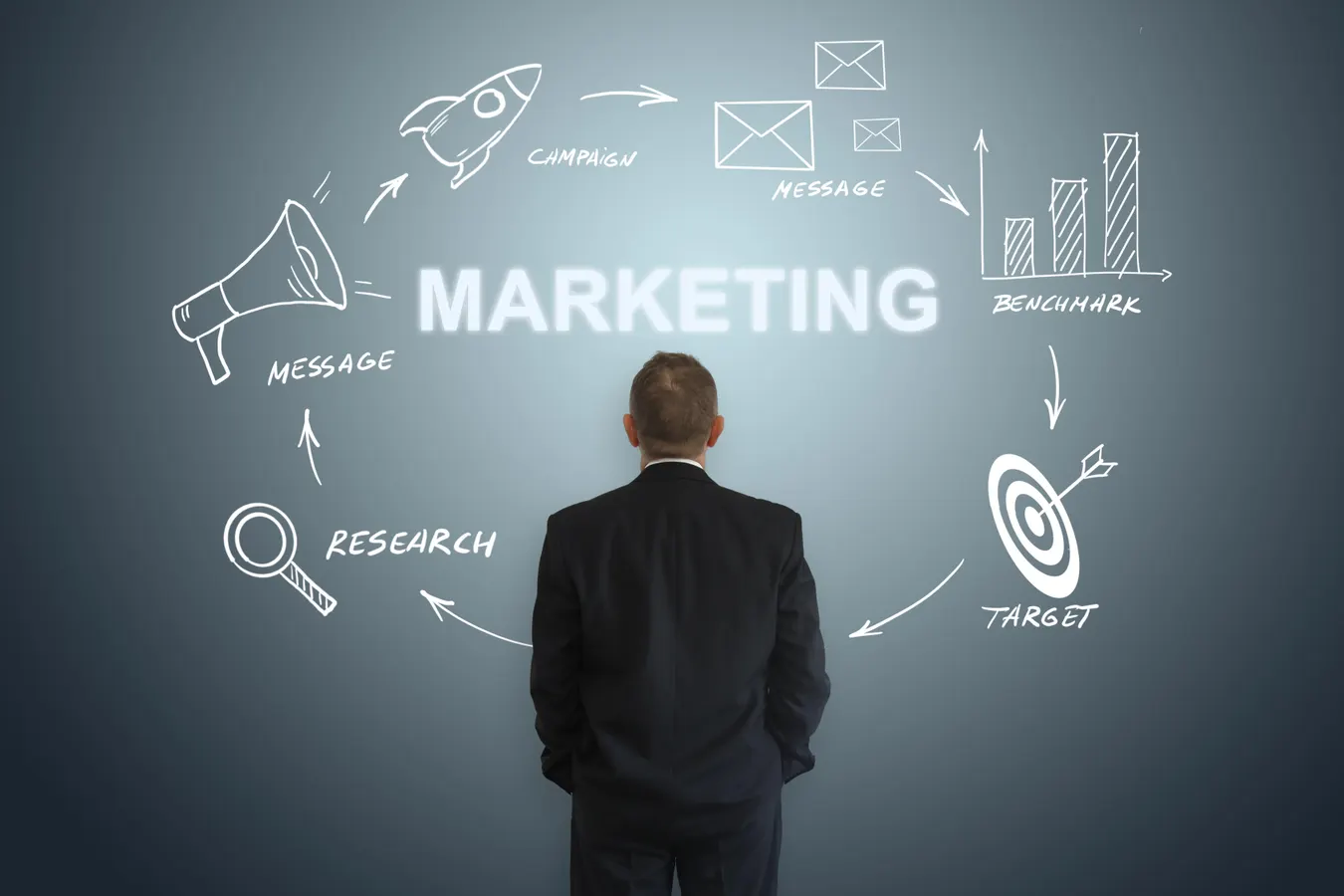Every business must stand out on a competitive market. You must use the right marketing strategy to increase your audience and reach more customers. Marketing can educate potential customers about the product or service you offer, helping them along their customer journey. This will help you increase sales. Marketing is not just about increasing brand awareness and letting more people know your brand. It also helps to streamline the sales process.
You need to use some form of marketing if you want your products and/or services to be sold. Marketing, when done correctly, can help you reduce costs and sell more products. Many businesses would not exist without marketing because they wouldn’t be able to drive sales. There are many marketing methods you can use to market your business. There is so much talk on the different marketing strategies that it can be confusing. You must be a marketer or entrepreneur to understand what marketing strategies are available.
Quick history of marketing
Some might say that marketing has existed since commerce began because people had to find a way of selling their products. Marketing can be traced back to the first printing presses and magazines. Billboards and other forms of print advertising followed. Marketing has evolved with the technology.
As televisions became more common and popularized in the home, commercials also increased. As marketers continue to find new ways of promoting businesses, marketing continues to evolve along with technology. You may be familiar with other types of marketing such as digital advertising which was created by computers, search engines, email and social media.
B2B marketing
You must first consider your target audience when deciding which marketing strategy for small business to use. There are two types of business: B2B (business-to-business) and B2C (business-to consumer). B2B marketing is a form of business-to-business marketing. This involves businesses marketing to other businesses. It may also involve a sales team answering questions and driving purchases. B2B businesses often use relationships to drive their sales and keep customers returning. Mailchimp, for example, markets to business owners our email marketing and automation tool.
Types of marketing
There are many types of marketing available. As we have already said, the evolution in technology has led to the development of marketing. Some marketing methods are more effective than others depending on your industry, business and customer base.
Also, it’s important to know that there are two types of marketing in general: traditional and digital. Digital marketing includes all digital aspects. Digital marketing is when you market to people via computers, mobile devices or online. Digital marketing lets you track and monitor all your marketing campaigns. This takes the guesswork out marketing, allowing you to optimize each strategy.
1. Content marketing
Content marketing is a powerful inbound strategy that helps customers find and learn about products, brands, or industries online. Content marketing includes:
- Blogs
- Posts on social media that are organic
- E-guides
- Video
Content marketing is aimed at providing your customers with information that they can use to help them make a purchase decision.
2. Social Media Marketing
Sometimes, social media marketing is considered to be a small component of content marketing. Many marketers, however, believe that social media marketing is an independent technique worth more attention. Social media can be a very cost-effective tool to increase your engagement with consumers, educate them, and help you sell more products.
You can choose between different social media platforms, some of which will be better suited to your marketing objectives than others. B2B companies, for example, get better results from LinkedIn and Facebook than Instagram and YouTube. Instagram, TikTok and Facebook are better for businesses that have a visual element, like e-commerce. You can reach your audience wherever you are if you use a good marketing strategy.
3. Influencer marketing
Influencer marketing is a strategy that some people consider a subset to social media marketing. Others consider it an entirely separate strategy. Influencer marketing allows businesses to leverage the relationships that thought leaders and influencers have built with their audiences.
Influencers have a high level of trust in their industry, and their followers will listen to their product recommendations. Influencer marketing can increase your brand’s exposure, brand awareness and sales. Influencer marketing is a common practice in B2C businesses, especially e-commerce. B2B businesses can also benefit from these popular marketing techniques if they are able to find an industry thought leader with a large following.
Related: Top 8 Reasons You Should Learn Digital Marketing in 2024
4. Search engine marketing
SEM is a marketing strategy that uses search engines such as Google to market. Search engine marketing is usually comprised of 2 digital marketing techniques.
- Search Engine Optimization (SEO). Have you ever thought about how your competitors are at the top of Google’s search engine results page (SERPs) when it comes to their SEO? SEO is the answer. This marketing strategy optimizes your website content in order to increase your ranking on search engines.
- PPC advertising is another form of search engine marketing that can help your website to appear in SERPs. Your website will be listed in the paid results section, which is located either at the top of the SERP or the bottom. PPC is a pay-per-click model, whereas SEO is based on organic traffic. Both methods are very effective in increasing traffic to your site.
5. Email marketing
Email marketing is highly effective. Email marketing involves marketers sending emails to customers and prospective customers to increase sales and assist customers through the sales channel easily. High conversion rates bring high returns.
6. Public Relations
Public relations is a form of marketing which can be used to build a business’s reputation in the media. Public relations helps to build beneficial relationships between a company and the media in order to manage your business’s image and reputation. In the end, PR is aimed at positioning your organization or an individual within it as a thought-leader in a specific industry. This will increase brand awareness and build trust with the public.
All businesses can benefit by managing their public image, but robust PR strategies work best for large businesses who are frequently in the news. Local PR can be beneficial to local businesses who have newsworthy information.
7. Print Marketing
Print marketing is the use print media to create brand awareness for your company. Print marketing is advertising in magazines, brochures and billboards. Print marketing cannot be measured, but there are ways to ensure that your efforts work. Print marketing is a great way to promote your service or product within a limited geographic area. You can also target national publications in order to increase brand awareness.
Print marketing is a powerful tool for all types of businesses. You must choose magazines with care. B2B companies may opt to advertise in trade publications, while B2C businesses can choose consumer magazines that have a broader, less targeted reach.
8. Direct mail
Direct mail marketing is similar to email marketing. However, instead of sending digital information to your mailbox, you receive printed materials in your mailbox. Print pieces can include CTAs, incentives and other information similar to emails. Direct mail is not as effective for marketing your business as email because many people consider it junk and throw it in the garbage without reading what you sent them. Your offer must be clear for customers to take the desired action.
Direct mail is a great example of a strategy that can be used by any business. A local spa could send direct mail to city residents to promote discounts. Meanwhile, a B2B firm would send its mailings to businesses instead of residential homes.
9. Radio and Television
Everyone has heard or seen commercials. Radio and television commercials continue to be effective marketing tools for businesses. These advertisements are expensive and therefore not suitable for small businesses. Your business will need to be creative if it has the budget to spend.
Change your marketing
You can combine traditional and digital marketing to promote brand awareness and increase sales. Consider your brand and the customers when deciding on marketing strategies. You should find out where your customers spend most of their time, and then figure out how to reach them.
Not sure where to begin? Mailchimp can help. Our marketing automation tools allow you to create drip campaigns, elegant marketing emails and websites that convert prospects into paying customers.
Read more:









